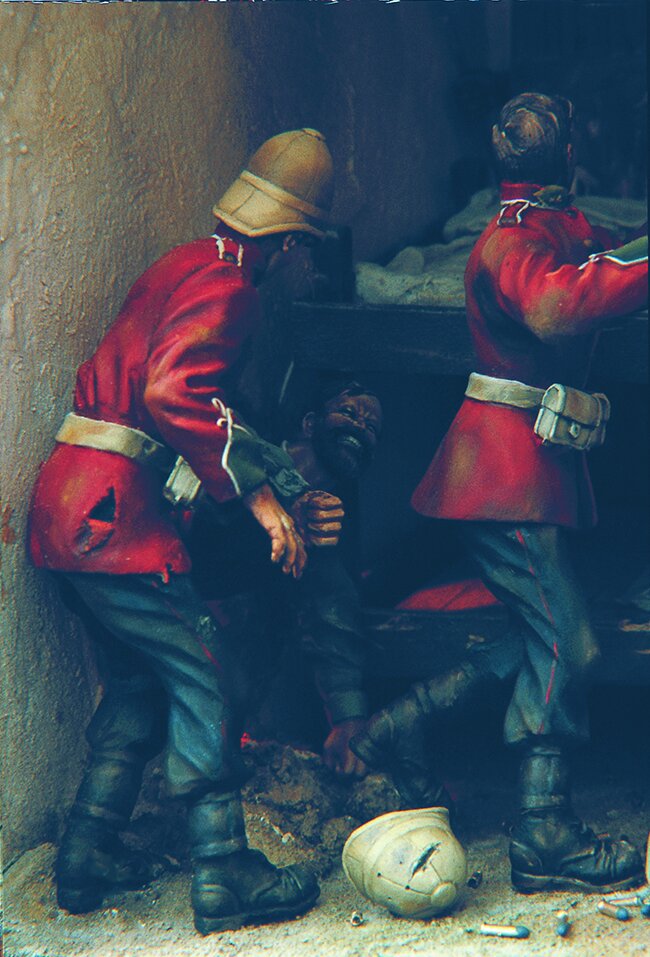Above: the floor plan for Shep’s diorama. Below: Detail shots.
From Sheperd Paine: The Life and Work of a Master Military Modeler and Historian by Jim DeRogatis (Schiffer Books, 2008)
J.D. Your next box was “The Defense of the Hospital at Rorke’s Drift.” What made you decide to go to Zululand? I know you’re a fan of the 1964 movie, Zulu, starring Michael Caine.
S.P. I’ll be the first to admit that I took the concept from the movie—which was fairly accurate, but not entirely—but I was really drawn to the subject because it was an enclosed scene perfectly suited to a box. I liked the idea of the Zulu warrior visible through the opening in the roof, and it had a lot of dramatic action in it, a lot of different things going on: the soldiers trying to barricade the doorway, and the cross action of the wounded coming through the wall on one side, and another solider desperately cutting a hole through the wall on the other.
I took some artistic license by compressing into a single moment some things that took place in different rooms at different times. In a movie or a play, one thing can happen after another. In a diorama, you don’t have the luxury of time: Everything that happens has to be seen simultaneously.
J.D. How did you start this one? Were you worried about the dimensions of the hospital?
S.P. No. Most of the time when I build a box, I start in the center. I do the figures first, and then I build the walls around the scene. The dimensions are usually a secondary consideration. The Monitor had specific dimensions I had to work with, but this one was free-form. Now, knowing what we’ve learned about the hospital, you’d be tempted to take the dimensions of the rooms and use those—there has been a lot more research published in the past few years—but at the time there was no information on the size of the rooms, so I could afford to take some liberties. Balancing absolute historical accuracy with creating a dramatic scene is always a tradeoff. I was probably always willing to make more compromises than some to achieve the drama, and fewer compromises than others.
J.D. Still, the amount of accurate detail here is amazing: The spent cartridges on the floor; the Martini-Henry ammunition boxes; the paper packets of ammunition; the helmet full of live rounds….
S.P. Details are important in a scene like this; it’s what keeps viewers coming back for another look.
J.D. You’ve lit the scene partly through the hole in the roof, but there’s also the light coming through the hole in the wall, giving the impression that the next room is on fire.
S.P. That’s just an orange light bulb around the corner where you can’t see it. I added some crumpled theatrical gel around the bulb. That is actually the only lighting in the scene—those two lights.







